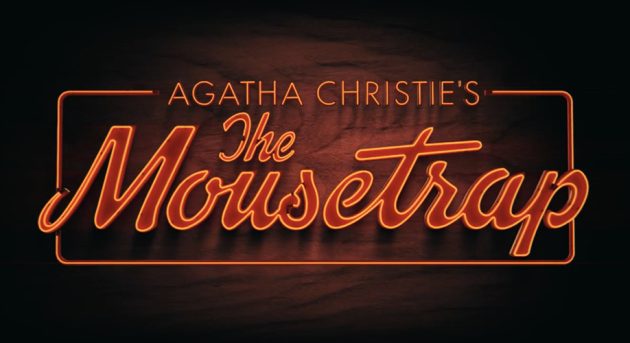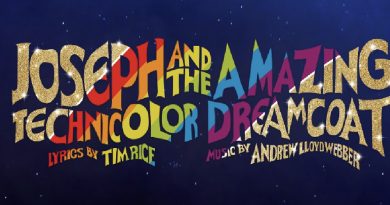The Mousetrap: Why We’re All Ensnared
John Osborne’s acclaimed 1950s drama Look Back in Anger premiered in London in 1956, and finished its run by the year’s end. Four years earlier, in October 1952 – the same year as the coronation of Queen Elizabeth II – Agatha Christie’s The Mousetrap commenced a West End run that became continuous, pausing only for the state-enforced lockdown of 2020. Running parallel with Queen Elizabeth’s reign, this year marks the Platinum anniversary of The Mousetrap, a celebration Aussies are invited to share when the show hits Sydney this October.
So how do we account for the enduring appeal of an ostensibly dated drama? How can we explain its staying power, while other brilliant productions – such as Look Back in Anger – experience peaks and troughs?
Like Osborne’s showpiece, Christie’s play is hugely zeitgeisty. First performed in a Blitz-scarred London, this whodunnit is replete with tweedy costumes and dated dialogue, oozing fusty Englishness. In fact, over two decades ago, the play was described as ‘mouldy cheese’ in the Evening Standard. But audiences disagree. It clearly transcends time. Three-score years and ten it may be, but retirement is far from imminent for this seasoned theatrical number.
On the face of it, The Mousetrap is nothing more than a bog-standard murder mystery. A group of strangers find themselves incarcerated in a country guest-house, confined by a raging blizzard. A police sergeant arrives and expresses concern that a murderer-at-large is among their number. His suspicion is confirmed when one of the guests is murdered, right on cue. The trusty officer then commences a systematic investigation into each guest, in a quest to unearth the killer. But, given its endurance, it seems there is a whole lot more to this play than the tropes of the genre.
Attempting to unpack just why The Mousetrap is so perpetually popular throws up a host of reasons. The following four are just for starters …
- It’s great drama
Christie herself said of her creation, ‘It’s the sort of play you can take anyone to. It’s not really horrible. It is not really a farce but it has a little bit of all of these things, and perhaps that satisfies a lot of different people’. What the play’s creator does is take a popular and familiar genre – the detective story – and subverts the conventions, thus offering familiarity with an edge. The fact that the narrative spans just a single day and is confined to a single room virtually guarantees high tension. Imagine being trapped in one location with seven strangers, knowing that one of them is a murderer …
The suspense is heightened by squashing the action into only two acts. Throw in a few ‘red herrings’, allow the audience to exercise their ‘little grey cells’ (a favourite phrase of Poirot, another Christie construct), plus an unexpected ending (trumping the audience in a battle of wits), and the result is a real crowd pleaser.
By 1977 more than four million had seen the play performed, testament to its pulling power. Every generation appreciates good drama when they see it – tension, suspense, clever plotting are timeless.
- It’s pure escapism
A trip to the theatre is in itself escapist entertainment. But The Mousetrap amplifies this idea. The title alludes to the ‘play-within-a-play’ device in Shakespeare’s Hamlet, in which the title character uses the strategy to establish the guilt of the suspect. In other words, it is a metaphorical ‘mousetrap’, set apart from the main narrative. To set the trap, the cast of suspects must be conveniently located in one setting. For the reason, Christie uses the fictional Monkswell Manor, thirty miles outside London. The audience is able to lose itself in this sealed-off metaverse, hooked on dissecting clues and trying to work out the identity of the killer.
Reality is left outside the walls of the theatre. And in 1952, the real world was challenging. Post-war London was still rubble-strewn as Britons struggled to rebuild. The King had died in February, giving way to the accession of the current Queen – a constitutional change that always shakes the foundations of a society. There were chronic housing shortages. Food rationing was still in play. Britain announced the development of atomic weapons. And in December, a deadly smog would claim the lives of over four thousand citizens. Inside the theatre, these problems seemed like a parallel universe. Food shortages? The guest house has cupboards full of tinned food, with enough food to last for the duration of the snowstorm. Phone lines are cut due to the weather. Detachment from the real world is complete.
The desire to escape from real life is not, however, confined to Londoners in 1952. It is a human impulse that is a constant. Despite the challenges of lockdown in recent years, many of us can simultaneously relate to the benefits of stepping back from the big, bad world and indulging in hermithood. Societal challenges evolve, but the desire to escape them endures. And the further we move away from 1952, the more intense the escapism – which perhaps helps explain why this play’s magic refuses to wane. Ironically, however, it transpires that the outside threat – the snowstorm – is no match for the danger lurking inside the Great Hall of Monkswell Manor …
- It fosters community spirit
Not only are the characters on stage an intimate circle, but the audience is too. When the audience becomes engaged in identifying the guilty party, it creates a collegiate – and potentially competitive – spirit. The experience verges of the conspiratorial: in keeping with tradition, audience members are asked not to reveal the identity of the killer to anyone outside the theatre. It’s like having exclusive membership to some secret club.
- It’s cathartic
The Mousetrap has a strong purgative element – without revealing the killer, let’s just say that justice is served and past wrongs are avenged. Every era is witness to injustices that are not satisfactorily addressed by officialdom, so the desire for vengeance is a visceral human need that is very relatable.
Although death features in the play, it is mainly as plot device rather than gratuitous sensationalism. It propels the action. The play is fundamentally about what is real and what is not – it challenges audiences to rethink their assumptions. It asks what kind of role mental health plays in our motivations, and examines the ripple of repercussions from past actions. In other words, the mystery element tugs not only at our lust for entertainment, but probes the implications of human behaviours. And there’s no use-by date on that.
Produced by John Frost for Crossroads Live and directed by Robyn Nevin, The Mousetrap is showing at Sydney’s Theatre Royal from 8 October – a unique opportunity to see for yourself what all the fuss is about. So, don your best tweeds and get set to sleuth.




